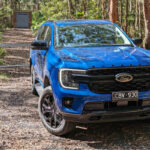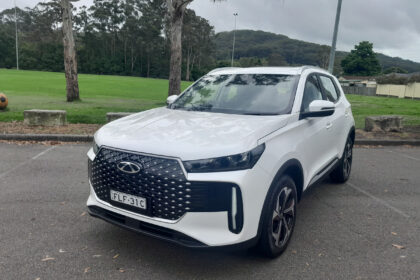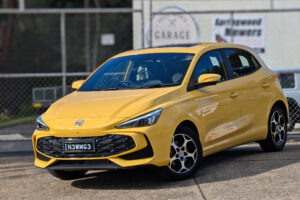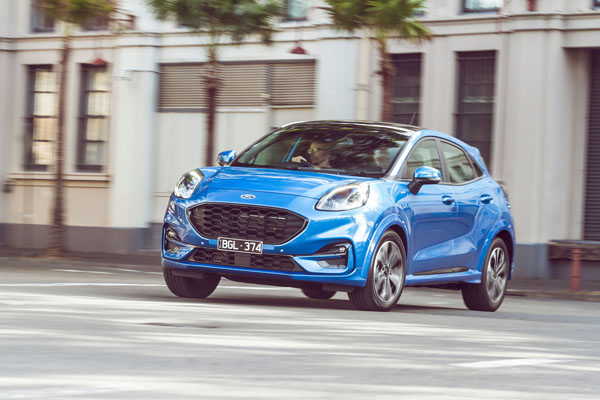
Electric vehicles have a fair way to go before they become realistic in the greater automotive world. In the meantime, the internal combustion engine is fighting a rearguard action in the battle to remain relevant.
With steep pricing and limited range holding back the bright sparks of the planet-saving private car world, one such petrol-powered protagonist is the Ford Puma, a compact sports utility vehicle boasting a combined urban / highway fuel consumption of 5.3 litres per 100 kilometres, which puts almost 800 km of driving from its 42-litre fuel tank.
Based on a stretched and widened Fiesta platform, the petite Puma, with its 1.0-litre, three-cylinder turbocharged engine, leaves the traditional hefty fuel slurping SUV in the dust, so to speak, the test vehicle recording 5.7 litres per 100 kilometres of premium petrol in a mix of driving over a week.
Engineered in Germany and put together in Romania, the new Puma comes into some stiff opposition in the mini-SUV market Down Under. Rivals include the Hyundai Venue, Kia Stonic, Toyota Yaris Cross and Nissan Juke, as well as small segment derivatives such as Mitsubishi’s ASX, Mazda CX-3 and Hyundai Kona.
Pricewise, for starters, the Puma, at $29,990, plus on-road costs, can’t match it with the Venue ($20,940), or Stonic ($21,490), while the Yaris Cross ($26,990) comes closer. Top cat Puma ST-Line V (the test vehicle) tips the scales at $35,540 but does carry quite a lot of kit for the price.
All take advantage of a five-year unlimited kilometre warranty and Ford Service Benefits such as complimentary service loan car, auto club membership, including roadside assist, as well as SYNC 3 sat nav map updates.
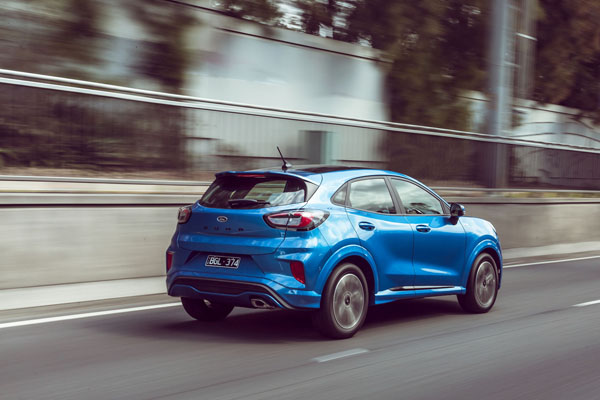
STYLING
Each 2021 Puma variant sports a unique front end with different radiator shape and grille design, the ‘V’ model carrying chrome-like highlights, so there’s no mistaking the owner’s investment as the car approaches.
Up from the ST-Line’s 17-inch wheels, the range-topper rolls on 18-inch stand-out alloys, while privacy glass adds a premium look to the sporty lines.
Lighting is up to the minute too with automatic high-beam assist LED headlamps, LED lights down the back and LED daytime running lights joining the sharp nose.
INTERIOR
The leather-trimmed seats feature an attractive stitched pattern and are on the firm side of supportive. The substantial steering wheel, with paddle shifts, adds to the feel of a true sports car.
The 410-litre boot is up there with the best in class and adds the bonus of a plastic-lined 80-litre compartment with a drain hole to take wet swimmers and towels.
Bag hooks and a 12-volt outlet are on hand, under the floor is a space-saver spare wheel.
INFOTAINMENT
Standard fitment is an 8.0-inch touchscreen, with rear-view camera, along with Apple CarPlay and Android Auto, wireless phone charging, an embedded modem, and climate-control air-con.
A 12.3-inch instrument cluster is easy to read, push-button start, DAB+ radio is in the hands of a premium 10-speaker Harman / Kardon system and as well as wireless charging, there are two USB inputs.
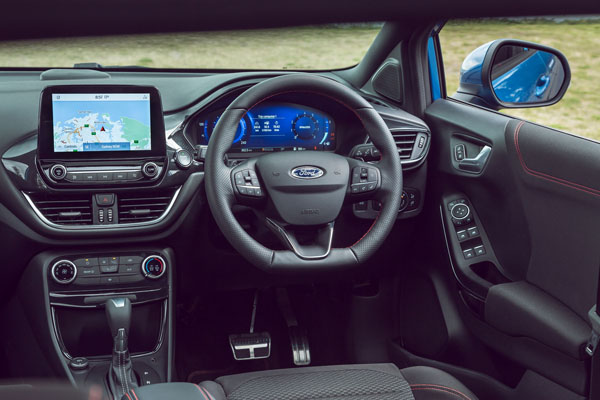

ENGINES / TRANSMISSIONS
The Puma is powered by Ford’s 1.0-litre, three-cylinder turbocharged petrol engine mated with a seven-speed dual clutch automatic transmission, feeding 92 kW and 170 Nm to the front wheels. Fuel is rated 95 RON.
SAFETY
The Puma won a five-star ANCAP safety rating with a 2019 European testing regimen.
Advanced systems across the range include autonomous emergency braking, with pedestrian and cyclist detection, lane departure warning and lane keeping assist, traffic sign recognition, driver impairment monitor, rear parking sensors, tyre pressure monitor and emergency assist.
Airbags include driver and front passenger, front seat side and side curtain.
The test car included a Park Package ($1500), adding adaptive cruise control, with stop / go, and lane centring, active park assist with front, side and rear sensors, front parking sensors and blind spot detection.
DRIVING
Push-button start fires up the cheeky 1.0-litre, three-cylinder engine, feeding 92 kW to the front wheels. After an initial surge as the turbo clocks on, the test Puma motor channeled a lawnmower when setting off.
Gear shifts were surprisingly smooth for such a small motor and had the Puma almost loping along the open road. Brakes needed to be given some leeway in a bid to pull up smoothly.
As mentioned above, the Puma ran to form, swallowing 7.1 litres of 95 RON petrol per 100 kilometres in city traffic, with the stop / start engine system on, and sipped 4.4 litres per 100 kilometres on a motorway run, which equates to the Ford combined claim.
Firm, some would say harsh, suspension had the Puma ST-Line V banging away as it tackled even minor bumps and dents. Potholes were a particular problem. Things were just as shaky in the rear seats, which were also short on leg room. While handling was assured and especially grippy on fast bends, it’s not high on ride comfort, this one.
I don’t know of another vehicle this size with a power tailgate and would have easily swapped the Puma’s hands-off workings for more cabin comfort.
SUMMARY
While the Puma ST-Line V is well kitted out, the buyer has a steepish price to pay for an SUV of this size. There are other compacts to consider for value for money.
AT A GLANCE
MODEL LINE-UP
Puma: $29,990
Puma ST-Line: $32,340
Puma ST-Line V: $35,540
Prestige paint: $650
Panoramic sunroof: $2000
Park Package: $1500
Note: These prices do not include government or dealer delivery charges. Contact your local Ford dealer for drive-away prices.
SPECIFICATIONS (Ford Puma ST-Line V 1.0-L turbocharged, 3-cylinder petrol, 7sp automatic, FWD)
ENGINE:
Capacity: 999 cc
Configuration: Three cylinders
Maximum Power: 92 kW @ 6000 rpm
Maximum Torque: 170 Nm @ 1500-4500 rpm
Fuel Type: Petrol 95 RON
Combined Fuel Cycle (ADR 81/02): 5.3 L/100km
CO2 emissions: 121 g/km
DRIVELINE: Seven-speed dual clutch automatic, front-wheel drive
DIMENSIONS, WEIGHT AND CAPACITIES:
Length: 4207 mm
Wheelbase: 2588 mm
Width: 1805 mm
Height: 1552 mm
Turning Circle: 10.4 metres
Kerb Mass: 1267 kg
Fuel Tank Capacity: 42 litres
BRAKES:
Front: Ventilated disc
Rear: Disc
STANDARD WARRANTY:
Five years / unlimited kilometres
RATINGS:
Looks: 7/10
Performance: 6/10
Safety: 5/10
Thirst: 8/10
Practicality: 5/10
Comfort: 4/10
Tech: 6/10
Value: 6/10
Overall: 5.9/10





